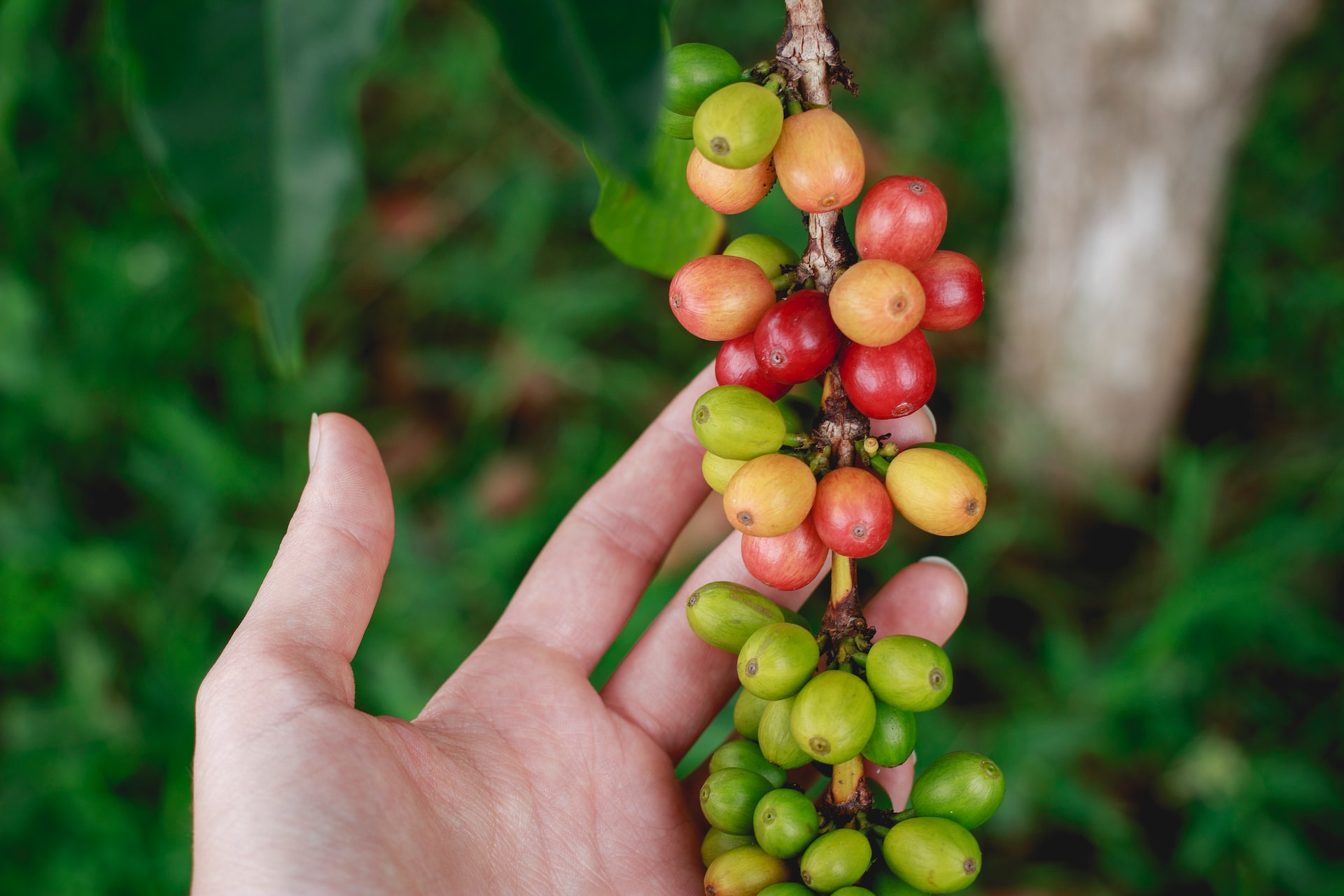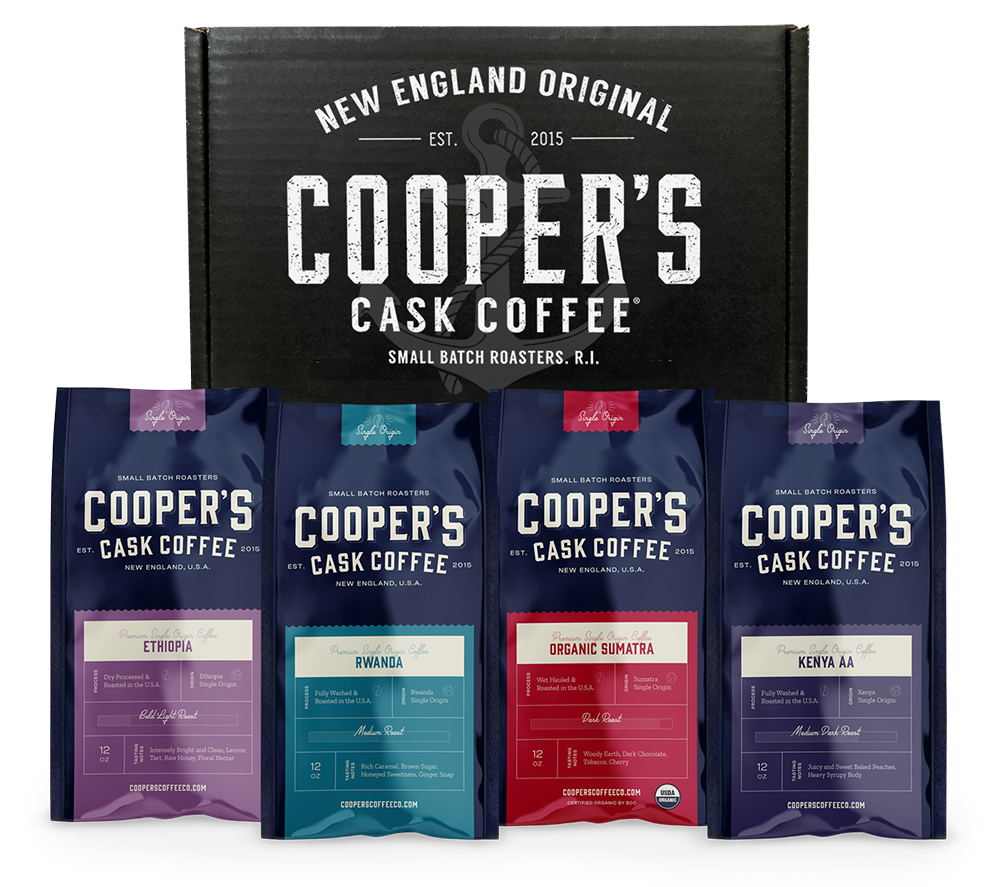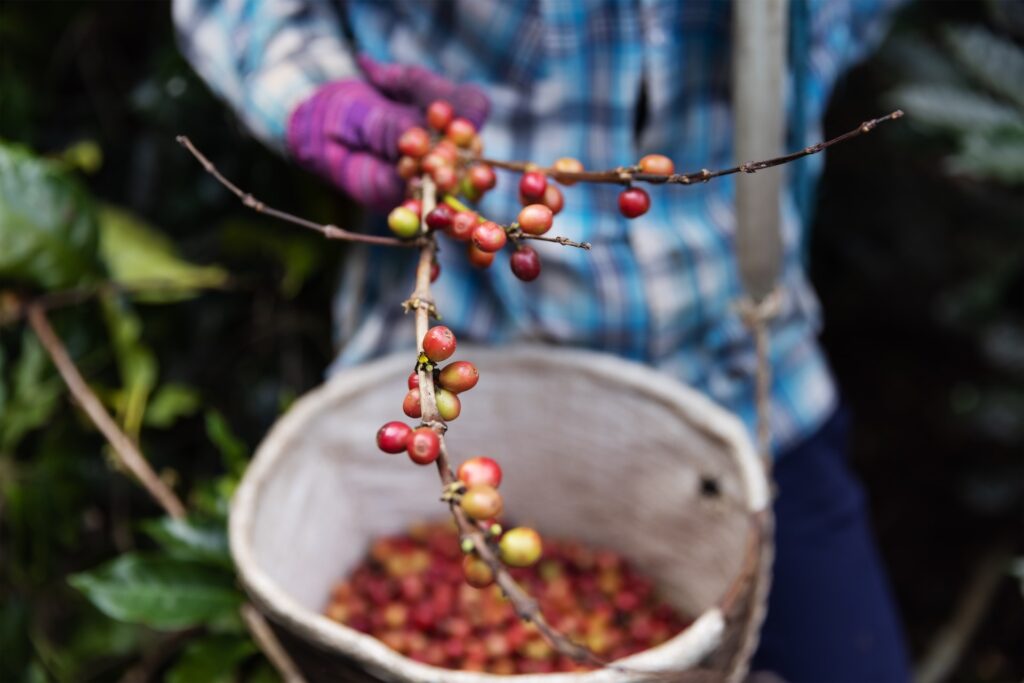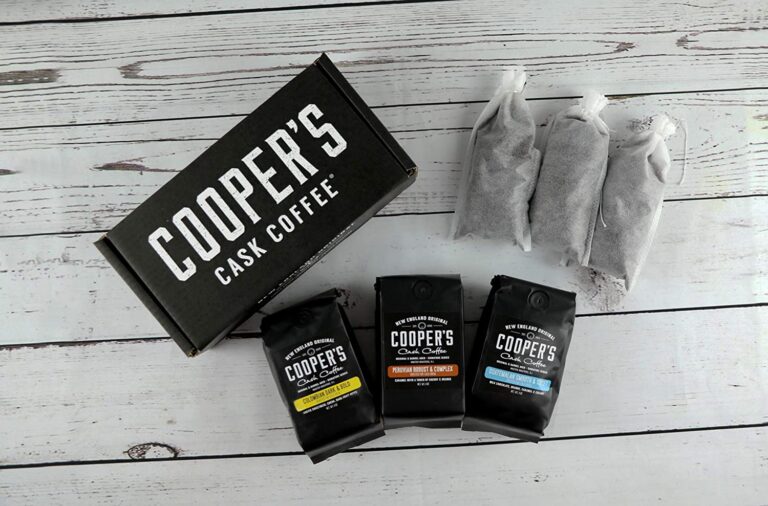Well [sighs deeply], we knew you were bound to ask us eventually. Guess it’s about time we had the talk about the nerds and the beans.
At Cooper’s Cask Coffee, beans don’t happen by accident. Our coffee nerds have scoured the globe for the best-quality beans for the best possible brew. All of our coffees use single origin, grade 1 specialty beans.
Specialty coffee beans come from many different sources around the world, and each region imprints its unique origin character on the beans.
Green Beans & Coffee Seeds
What are Coffee Beans?
This might sound like a no-brainer, but it’s important to get one thing straight. We call them coffee beans, but they’re actually not beans at all. Technically, they’re seeds. That’s right, coffee beans are not true beans.
Is it part of some deeper conspiracy? No, this one isn’t much of a head-scratcher. Over time, English speakers seem to have all agreed to call them beans simply because they look like beans.
All beans are seeds, but only the seeds of legumes are beans, according to science. According to the English language and coffee experts, however, calling them coffee beans is both acceptable and expected. You’re welcome to go around calling them coffee seeds if you like, but we are not responsible for any strange looks you get as a result.
Why does this matter? Well, knowing that coffee beans are seeds can help answer the question, Where do coffee beans come from? Unlike legumes, which mostly grow inside pods, coffee beans are actually the seeds harvested from coffee cherries.
Picking Coffee Cherries
If you’ve ever picked your own fruit (be that apples, blueberries, strawberries, etc.), you’ve probably noticed that not all fruit ripens at the same time, even if they’re on the same plant or even the same branch. It’s no different with coffee.
Farmers who pick the cherries by hand are careful to pick only the ripe (often red) ones and return for the not-yet-ripe cherries in a couple of weeks. Coffee cherries are also sorted after picking to eliminate under-ripe cherries.
One of the factors that distinguish our gourmet coffee from commodity coffee is the careful selection and sorting of only the best, ripe cherries. To further weed out lower-quality cherries, the farmers and coffee processors will often use what’s called a float test—the cherries are submerged in vats of water, and defective cherries float to the surface, where they can be easily removed.

Cherries & Peaberries
Most coffee cherries contain two seeds, but there is one notable exception—peaberry coffee. A peaberry refers to a coffee cherry containing only one seed, and it gets its name from its resemblance to a pea.
These coffee cherries are smaller and are the result of a natural mutation that can affect all coffee plants. Even though peaberry coffee is often associated with Tanzania, it isn’t a separate variety of coffee. These cherries can’t be grown intentionally. Instead, they have to be found and sorted from the much more common two-seed coffee cherries.
So what’s the big deal with peaberry coffee? Only about 10% of coffee cherries are peaberries, but the hype is about more than scarcity. Coffee peaberries are prized for having a richer sweetness, brighter acidity, and an exceptionally balanced flavor profile.
Tanzania Peaberry
Our expert coffee roasters at Cooper’s Cask Coffee are masters at using the roasting process to draw out the origin character of each of our single origin coffees. Our Tanzania Peaberry Medium Light Roast Coffee is no exception.
Our Tanzania Peaberry Coffee is remarkably rich and complex. Our roasters perfectly capture the natural nuances of the high-altitude-grown Tanzanian coffee, grown in volcanic soil. In the cup, this medium light roast coffee is sweet, fruity, with bright acidity. Taste for yourself and discover its regionally distinct notes of raspberry, orange, and wine.
From Fruit to Favorite Beverage
Before our beloved single origin beans can be exported to us, they have to first be extracted from the coffee cherries and processed. This can be done in a number of different ways that can, in turn, influence the flavor profile of your brew to-be.
Coffee Processing Methods
Washed
The washed processing method uses water to remove the leftover mucilage (stickiness from the cherry) and to weed out defective and lower-quality beans.
It starts with freshly picked coffee cherries. The fruit is removed within days of being picked. This part of the process is called de-pulping. De-pulping removes the cherries from the coffee beans, and the residual fruity stickiness is removed by washing the beans in large vats.
But before the mucilage is removed, the still-sticky beans are left in water overnight to ferment. The next day, the coffee beans are washed and laid out to dry before being prepared and stored for export. Part of this later preparation stage involves hulling the coffee beans—removing the papery layer called parchment.
The washed processing method tends to give the coffee a fruitier, brighter, and cleaner flavor profile. Our single origin coffee from Rwanda is an example of a coffee processed using the washed method.
Wet-Hulled
The wet-hulled processing method is similar to the washed method up to a point. Freshly picked coffee cherries are de-pulped soon after picking, and the coffee seeds are allowed to ferment with the mucilage in water overnight.
The next day, these beans begin a partial drying process. After they’re semi-dry, the beans go straight to the hulling stage, removing the parchment layer while still partially wet. This is done to speed up the remaining drying process.
Indonesia is one of the only countries where this method of processing is used. This is largely due to its humid, cloudy climate. Other methods would not allow the beans to dry fast enough.
Wet-hulled coffee is known for its distinctive earthiness, a quality on full display in our Organic Sumatra Dark Roast.
Dry
Dry processing (aka natural processing), as you can probably guess from the name, uses a lot less water. Instead of de-pulping the coffee cherries soon after picking, the cherries are allowed to dry in the sun or on large patios.
As the cherries dry, workers use tools to regularly turn them in order to prevent mold from growing and to ensure they dry evenly. At the end of the drying stage, the once-red berries are nearly black in color. By this point, they’re ready to be mechanically de-pulped using a machine that removes the dried fruit as well as the parchment at once.
Natural processing gives the coffee undertones of berries and honey. You can explore the complexity of dry processed coffee with Cooper’s Ethiopia Bold Light Roast Coffee and our Organic Ethiopia Decaf Coffee.
Honeyed
In the honeyed processing method, ripe coffee cherries are de-pulped or partially depulped shortly after being picked. But instead of being washed, the coffee beans are dried with some or all of their mucilage.
What this does is cause the coffee beans to ferment as they dry. While there is a lot of variation in the drying phase of the honeyed processing method, it usually takes about 2 weeks to complete.
The remaining dried mucilage and parchment are not usually removed until the beans are ready to be exported.
Honeyed processing imparts a uniquely rich sweetness and complexity to the beans. Our Cabernet Barrel Aged Coffee uses grade 1, single origin, honeyed Costa Rican beans to take your understanding and appreciation of coffee’s natural sweetness to a whole new level.

Where Do Our Single Origin Coffee Beans Come From?
To best answer the question (Where do coffee beans come from?), let’s take a look at the story behind some of our single origin coffees.
Peru
Cooper’s robust and complex Peruvian Cold Brew Coffee is sourced from the Cajamarca region in the highlands of northern Peru. Grown at elevations between 1,500 and 1,750 meters above sea level, we process these beans to highlight their natural notes of caramel and hints of cherry and orange.
Rwanda
Our Rwanda Medium Roast Coffee comes from the Karongi district of Western Province, Rwanda, where the beans are grown at an elevation of 1,400 to 1,600 meters above sea level. The region is known for its sweet-tasting, silky-bodied coffees. Our medium roast features these distinct regional characteristics with its notes of brown sugar, rich caramel, and honeyed sweetness reminiscent of ginger snaps.
Ethiopia
Our Bold Light Roast and Organic Decaf Ethiopian coffees get their distinct sweet, bright, fruity complexity from being grown at an elevation of 2,050 to 2,100 meters above sea level. The Bold Light Roast is intensely bright and clean, with notes of raw honey, lemon tart, and floral nectar. And our Organic Ethiopian Decaf features notes of sweet lemon, chocolate orange, and black tea.
Sumatra
Cooper’s Organic Sumatra Dark Roast Coffee comes from the Lake Toba Region of North Sumatra, Indonesia. The 1,100 meter elevation, paired with the region’s distinct wet-hulling method for processing the beans, gives this coffee its origin-specific, full-bodied earthy and chocolatey character.
Guatemala
Our smooth and sweet Guatemala Cold Brew Coffee hails from the Huehuetenango region of Guatemala and grows at 1,650 meters above sea level. This coffee’s sweetness, smoothness, and notes of milk chocolate, creamy caramel, and just a touch of orange is true to its origin character and sure to delight your palate.
Where Your Coffee Beans Come From Matters
If you’re looking to immerse yourself in the colorful world of single origin coffee, Cooper’s Single Origin Coffee Box Set is a great place to start.
As you can see, there’s a lot that goes into answering the question, Where do coffee beans come from? If you’d like to know more about the origin of your favorite single origin coffees, feel free to contact us.
Small batch, big satisfaction. Cooper’s Cask Coffee.
Sign up for our email list and get 10% off your first order!


